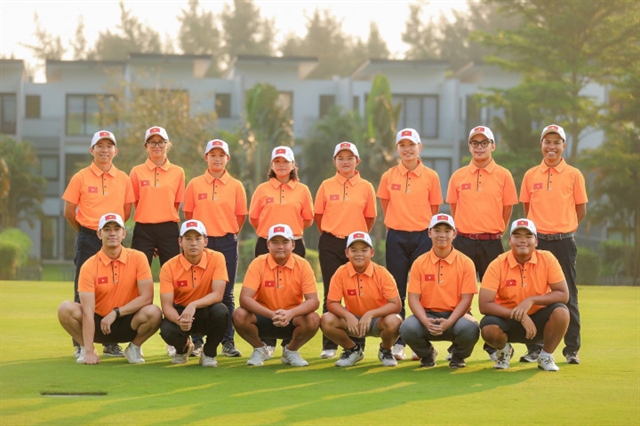 Features
Features
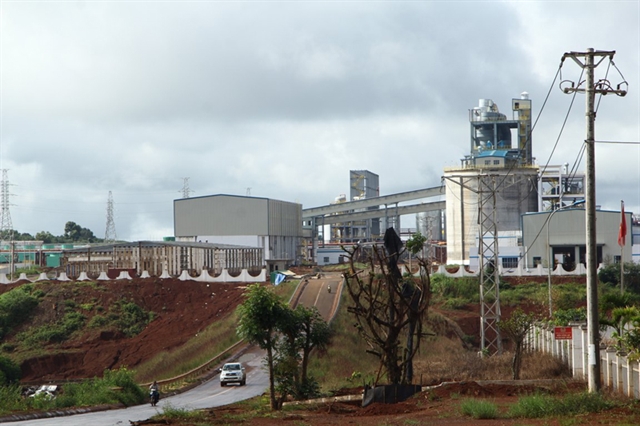
With its exotic markets, French colonial architecture and resplendent temples, it's easy to lose yourself in the UNESCO site of Luang Prabang.
 |
| Luxurious: The entrance of the Sofitel Luang Prabang, flanked with two elephant statues. — Photo courtesy of the hotel |
By Thúy Hằng
Leaving Hà Nội on a fiercely hot summer day, after an hour by air, Laos’ ancient city of Luang Prabang gradually appears below our airplane wings. From a few hundred metres above, my first impression of this UNESCO-listed heritage is a vast area of green land and mountains, surrounded by snaking rivers.
Once the place where the royal family ruled the Kingdom of a Million Elephants, founded in 1353, Luang Prabang is the main international gateway to Laos, according to a Guardian article.
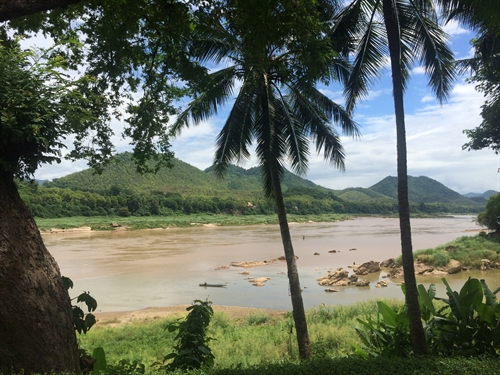 |
| Lush green: Coconut trees line the riverbank in Luang Prabang. — VNS Photo Thúy Hằng |
Ringed by mountains, and idyllically set 700 metres above sea level at the confluence of the Nam Khan and Mekong rivers, the former royal capital of Luang Prabang is more than just the country’s picture-perfect showpiece.
No one can resist the enchantment of Luang Prabang, even the most jaded of travellers, who are sure to be lulled into a dream by the city’s timeless tranquility with its glistening Buddhist temples, French colonial architecture and friendly residents. That is perhaps why the town was once referred to as ‘the Refuge of the Last Dreamers’.
The twinkling river reflection of gilded temples, the green of the ancient trees with their scarlet flowers, the saffron robes of the monks and the pearly-white frangipanis whose fragrance mingles with that of fresh-brewed coffee and exotic spices – all these sights and smells make the town one of the most alluring places in Southeast Asia.
Tourists visiting Luang Prabang shouldn’t miss the chance to see one of the most sacred Lao traditions, tak bat, or the Buddhist almsgiving ritual, which dates back to the 14th century.
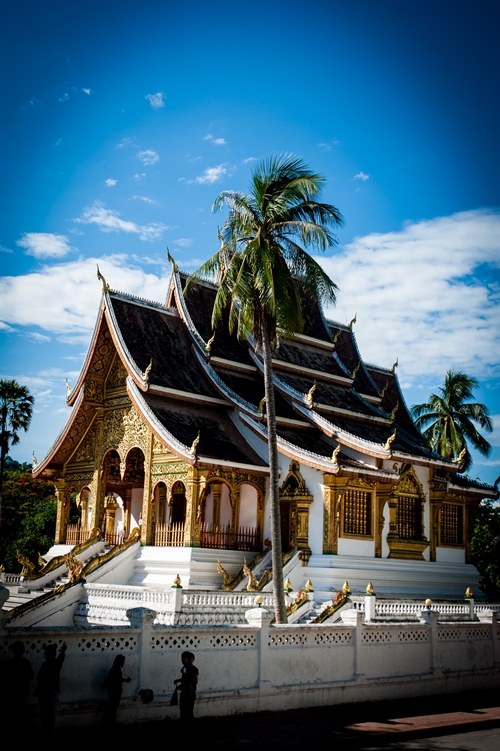 |
| Resplendent: The Royal Palace is among must-see destinations in Luang Prabang. — VNS Photo Hà Vy |
As the sun rises in Luang Prabang, hundreds of Buddhist monks depart from their temples to gather their daily offerings, which most commonly are rice, fresh fruit and traditional sweet snacks. The daily alms gathering begins on the main street before spreading to all the side streets.
Our group of six got out of our comfy beds at 5am to join other local residents and tourists to offer alms to the monks. We kneeled by the roadside in front of the 3 Nagas Hotel on the main street with big baskets of steamed sticky rice, waiting quietly until monks of all ages passed by to accept our gifts.
The daily ritual is both peaceful and spiritual, and gives you a wonderful opportunity to experience an ancient Lao tradition. However, there are some strict rules if you wish to join the event.
Firstly, shoulders, chests and legs must be covered in modest clothing as a mark of respect. You should also remain a suitable distance from the monks and must not interrupt the procession under any circumstances. Photographs may be taken, but from a distance and never use a camera flash. The ritual has to be performed in silence. Talking to or touching the monks at any time, even when making an offering, is prohibited.
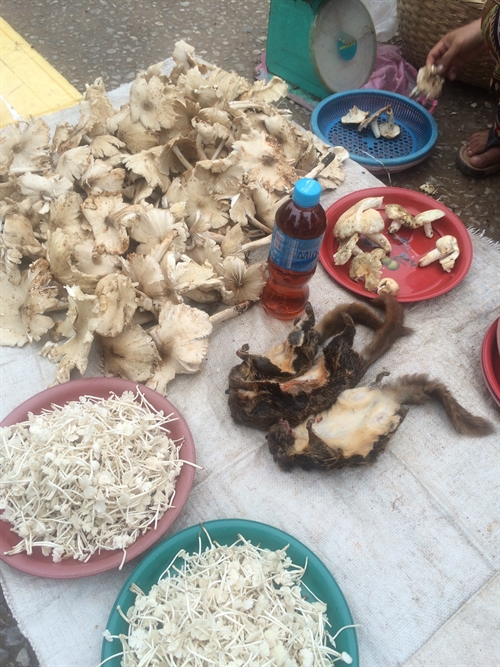 |
| Nature’s bounty: The morning market offers all kinds of exotic things, from hunted squirrel, to wild mushrooms and giant river catfish. — VNS Photo Thúy Hằng |
Another must-do morning activity is to visit the local market, where you can see the generosity that Mother Nature offers this dreamy land.
While walking through the morning market, located within a long and narrow hamlet, I was excited to see all kinds of products from the nearby river and jungle: some ill-fated squirrels lying next to fresh bamboo shoots, different kinds of wild mushrooms and vegetables displayed on banana leaves and giant river catfish in baskets.
We were fortunate to have chef John to accompany us during the market visit. The kitchen conductor of the luxury Sofitel Luang Prabang was patient enough to answer all our questions about exotic things we saw in the market, and explained to us about spices used in traditional Lao dishes.
We headed back to the hotel with some fresh ingredients that we used later in the cooking class with chef John.
Under the guidance of the young chef, we prepared a sumptuous lunch featuring all Lao dishes such as phanaeng kai (minced chicken cooked in coconut milk and curry), mhok het (steamed mushroom in banana leaf with lemongrass and other herbs), and oua si khai (fried minced chicken with lemongrass).
Sampling the distinctive spices and flavours of Lao cuisine at Governor’s Grill – a sensational tented al fresco setting restaurant - while enjoying the green of the surrounding botanic garden, is really one of the best experiences we had during our stay at Sofitel Luang Prabang.
Our memorable experiences in this tranquil city were topped off with a joyful boat tour on the Mekong River.
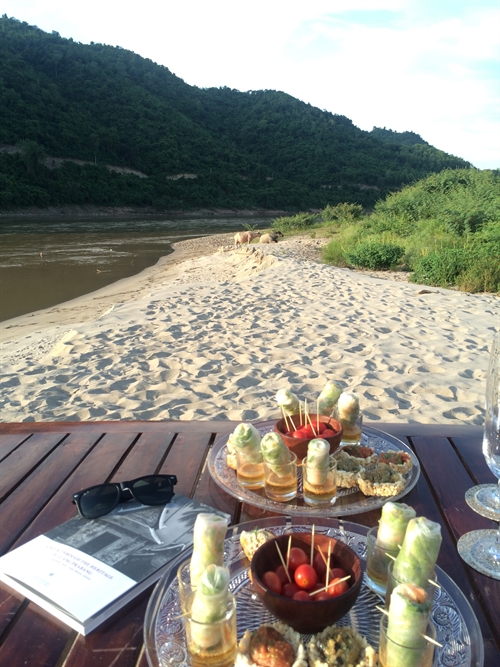 |
| Private island: Our picnic was set up right on the sand dune. — VNS Photo Thúy Hằng |
The 28m-long Dok Keow wooden boat, which was equipped like a floating mini hotel with a comfortable bedroom, modern toilet, kitchen and lounge at the end of the boat, glided on the river, taking our group to a sand dune in the middle of the river.
A small picnic was set up on shore, which we called the “beach”. And I have to say that nothing is better than sipping a chilled glass of champagne while enjoying the stunning sunset on the immense river and feeling the gentle touch of wind blowing through your hair.
Although Luang Prabang is small, there are many things to see here. We did a small workout by ascending more than 350 steps up to Wat Phousi, which is also an ideal place to enjoy a spectacular 360-degree view of the ancient city.
Royal Palace, Royal Museum and any of the more than 30 temples in town should be on every tourist’s sightseeing itinerary.
Active travellers can get up close and personal with Laos’ gentle giants at the elephant conservation camp or take in some scenes of riverside life with a cruise or kayak excursion on the rivers. Two waterfalls that are perfect for picnicking await in the foothills nearby, and classes are available in indigenous crafts like weaving and silk dyeing. — VNS

.jpg)


